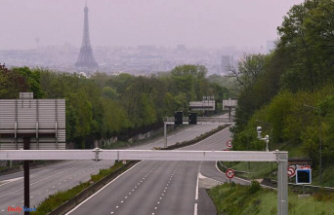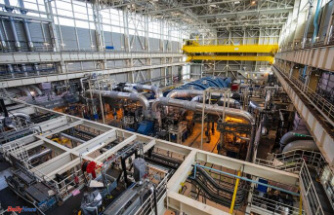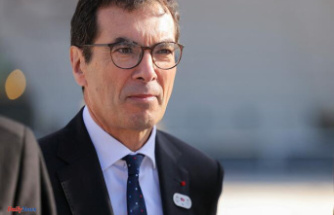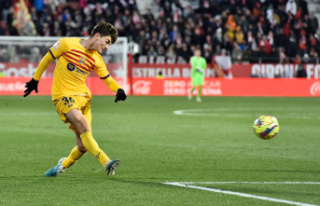In the collective imagination, Barcelona has always been the city of design. From the incipient modernity of the 1960s to the pre-Olympic boom, the city positioned itself as a benchmark for design, something that was evident in its squares, shops, and parks. Also with Coby. Although this image has weakened in recent years, Barcelona continues to promote the culture of design, intrinsically linked to the industry. This legacy and commitment to the future were discussed this morning at the conference Barcelona, city of design, organized by EL MUNDO and Expansión, in collaboration with SEAT and Banco Santander, at the Intercontinental Hotel. A meeting attended by prominent figures from the world of design and politicians such as the deputy mayor Jaume Collboni, leader of the PSC; councilor Eva Parera, spokesperson for Valents and Daniel Sirera, PP candidate for mayor.
"Cities are being redefined and the world of design has changed radically in recent years. At the gates of the municipal elections, we must rethink the role of design in the Barcelona of the future," said Iñaki Ellakuria, chief editor and delegate of EL WORLD in Catalonia, when inaugurating the meeting with an icon of design made in Barcelona, Nani Marquina. The emblematic designer, who founded the company that bears her name in 1987, recalled the beginnings of design in the 1960s, when she was just a girl who was fascinated by how her father, Rafael Marquina, author of the famous non-drip oil can (which created in 1961 and Spain has exported to the entire world). "When I was very little I wanted to be a designer, it was a job that nobody knew about and that mystery made it even more attractive. In the 80s there was a real explosion, there was a lot of talk about design in Barcelona, it was the time of 'do you work or do you design?' It was even an excess... In the hairdressers they even hung posters of 'designer hairstyles'", explained the designer who revolutionized the world of rugs. When she started, the rugs were classic or oriental in style and Marquina broke in with minimalist geometries and color, lots of color. "It was very easy to make rugs because there weren't any... I could allow myself the luxury of using yellow, red, pink colors... There was total freedom that is now practically impossible", she pointed out, the one who made crafts an innovation.
The round table Technology, sustainability, innovation and circularity as keys to design brought together four heavyweights in Catalan industry: SEAT S.A., Escofet, Roca and Simon Electrics. "Design and technology are not separate, they are part of the same process," said Jordi Font, director of development of Color and Upholstery at SEAT S.A., a company that has made a firm commitment to Cupra, its high-end range of vehicles that stands out for its stunning aesthetic. On the labels of the Cupra seats, the slogan is Created in Barcelona, where SEAT has its historic factory in Martorell and, in the center of the city, at the intersection of Diagonal and Paseo de Gracia, its innovative Design Lab. "In the Within the framework of the Volkswagen group, we have the advantage of knowing and receiving designers from the United Kingdom and Germany. When they come to Barcelona, their designs and proposals are impregnated with the influence of the city, with this light, with the emotions of its colors", highlighted Font, who is currently working with his team on a project that will see the light of day in 2028. "We always look ahead, thinking about what the design will be like in five years."
If Cupra was created in Barcelona, at Escofet they have been creating the same city since 1886, from the pavement to the street furniture and even the new façade of the Sagrada Família. "More than a source of inspiration, Barcelona is a test platform. After 130 years, the panot [the characteristic Flor de Barcelona tile] continues to be the skin of the city, although it is now in the process of being reformulated," said Enric Pericas , Director of Institutional Relations at Escofet, a company currently part of Cementos Molins. Faced with the growing strength of Madrid and Valencia, also mainstays of national design, Pericas claimed that "healthy competition" to "return Barcelona to its central position on the design map."
"Design should be studied in all schools. Society often sees it as an additive, a dispensable ingredient, something external that goes well to sell. Design is essential! And if it helps to sell, even better", considered the veteran designer Antoni Arola at the second round table that debated the influence of design on society, training and its role as an economic engine. The general director of Barcelona Design Center and founder of Barcelona Design Week, Isabel Roig, defended the strong point of the Catalan capital: "Barcelona's differential value is its concentration of design schools and great young talent. There is no other city in the world with so many schools per square meter".
The first design school in Spain was Elisava, which opened its doors in 1961. Its director, Javier Peña, made quite a declaration of intent: "Society understands the value of design. We must not confuse the design that makes, that acts, that makes an impact with the design of the name, that creates an image and brings values to the brand. The brand and the idea are fine, but you have to act. And acting means putting resources. Because we can be more influential." And another emblematic designer of the city, Sison Pujol, CEO of NOMON DESIGN, seconded him: "Barcelona has become a true design hub and it can be even more so".
The young Marc Fabra LÚCID DESIGN co-founder of the Lúcid Design agency, focused on a change of mentality for a more sustainable future. "80% of the environmental impact of a product is decided in the design phase. With the best of intentions we have been part of the problem but we can also be part of the solution. We have the responsibility to change things and generate a positive impact and sustainable."
In this sense, and by way of conclusion, the director of the Fab Lab Barcelona, Guillem Campodrom, drew a portrait of what the designer-model should be like: "We have to claim another type of designer: not the one who sits on a white table and designs a object to be manufactured thousands of kilometers away, but the one who wants to be part of the manufacturing process. That is the one that we should claim from Barcelona: the one who wants to return to the workshop or be an artisan".
According to the criteria of The Trust Project












